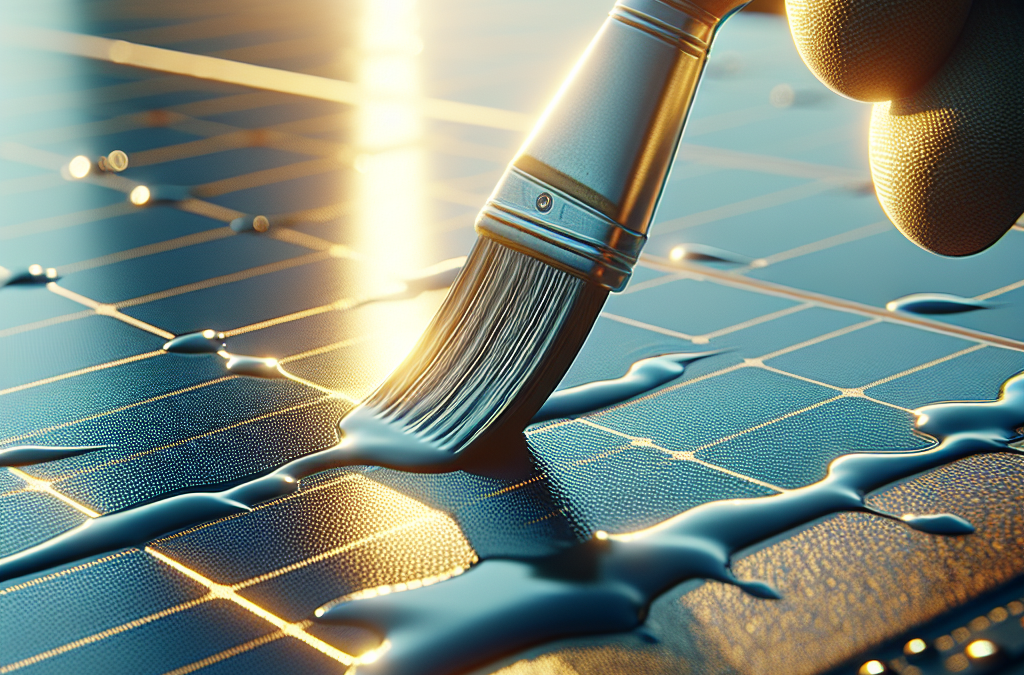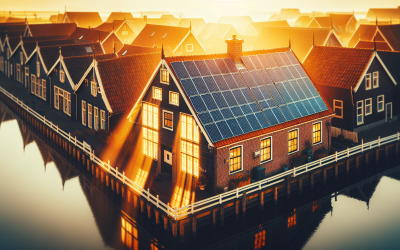Are you curious about whether there are any alternative technologies to traditional solar panels? As the demand for renewable energy grows, scientists and researchers are constantly exploring new possibilities. In this article, we will explore some innovative technologies that have the potential to revolutionize the solar industry. From flexible solar cells to solar paint, these alternatives offer exciting prospects for the future of clean energy. So, let’s dive in and discover the promising alternatives to traditional solar panels!
Solar Paint
Introduction to Solar Paint
Solar paint, also known as “solar-powered paint” or “sunlight-activated paint,” is a revolutionary technology that aims to convert sunlight into usable electricity. Imagine being able to transform any surface into a solar energy generator simply by applying a coat of paint. This innovation has the potential to change the way we harness solar power, offering a versatile and aesthetically pleasing alternative to traditional solar panels.
Working of Solar Paint
Solar paint consists of tiny photovoltaic particles that absorb sunlight and convert it into electrical energy. These particles are made from semiconducting materials, such as titanium oxide or perovskite. When sunlight interacts with these particles, electrons are excited, creating an electric current. The paint’s composition allows it to efficiently capture solar radiation across a range of wavelengths, making it an effective energy source even in low-light conditions.
To maximize energy output, multiple layers of solar paint can be applied, increasing the surface area available for light absorption. Once the solar paint generates electricity, it can be stored in batteries or immediately used to power various devices and systems.
Advantages of Solar Paint
One of the most significant advantages of solar paint is its versatility. Unlike traditional solar panels, which are often rigid and require a dedicated installation space, solar paint can be applied to various surfaces, including walls, roofs, and even cars. This flexibility opens up new possibilities for solar energy integration, allowing us to utilize unconventional spaces and seamlessly integrate solar power into our daily lives.
Solar paint also offers aesthetic benefits. Its thin and flexible nature allows for a more discreet and visually appealing integration into architectural designs. With solar paint, buildings can become both functional and visually striking, exemplifying a harmonious blend of sustainable technology and modern aesthetics.
Furthermore, solar paint can contribute to energy independence. By generating electricity on-site and reducing reliance on the grid, individuals and communities can reduce their carbon footprint and decrease energy costs. Solar paint can be particularly beneficial in remote areas or in regions with limited access to traditional energy sources, providing a clean and renewable energy solution.
Limitations of Solar Paint
Despite its potential, solar paint still faces some limitations that need to be addressed. One of the primary challenges is the efficiency of energy conversion. Currently, solar paint has a lower efficiency compared to traditional solar panels, meaning it generates less electricity for a given amount of sunlight. However, ongoing research and development efforts aim to enhance the performance of solar paint and make it more competitive.
Durability is another consideration. Since solar paint is directly exposed to the elements, it must withstand harsh weather conditions, UV radiation, and potential wear and tear. Ensuring the longevity and robustness of solar paint coatings is crucial for long-term sustainability and widespread adoption.
Additionally, the cost of solar paint remains relatively high compared to conventional solar panels. As the technology matures and production scales up, the cost is expected to decrease. However, for solar paint to become a viable alternative to traditional solar panels, further cost reduction and market competitiveness are essential.
While solar paint shows immense promise, it is worth mentioning that it is still an emerging technology. Further research, development, and commercialization efforts are necessary to fully realize its potential and address the existing limitations.
Solar Windows
Introduction to Solar Windows
Solar windows, also known as solar glazing or photovoltaic windows, are a groundbreaking application of solar energy technology. These windows integrate solar cells into their structure, allowing them to harness sunlight and convert it into electricity while still serving their primary function of providing natural light and insulation. Solar windows offer a promising solution for energy-efficient buildings, where windows can contribute to energy generation rather than being solely passive elements.
Working of Solar Windows
Solar windows utilize transparent solar cells, which are designed to absorb sunlight while allowing visible light to pass through. These cells are typically made from thin films of specialized semiconducting materials, such as amorphous silicon or organic polymers. When sunlight strikes the solar windows, these cells convert the captured solar energy into electricity through the photovoltaic effect.
To optimize energy conversion, solar windows can employ various design approaches. One common strategy involves patterning the solar cells into small, interconnected dots or stripes, allowing them to capture light from different angles and maximize the energy harvested. Another approach incorporates transparent conductive coatings and thin-film technology, which enhances both the transparency and energy conversion efficiency of the windows.
Advantages of Solar Windows
Solar windows offer numerous advantages that make them an attractive option for energy-efficient building design. First and foremost, they allow buildings to utilize natural sunlight while simultaneously generating electricity. This dual functionality reduces the reliance on artificial lighting and grid-based electricity, leading to energy savings and lower environmental impact.
Additionally, solar windows provide an aesthetically pleasing alternative to traditional solar panels. The transparent nature of these windows allows for unobstructed views and maintains the architectural integrity of a building. By seamlessly integrating renewable energy generation into the building envelope, solar windows enable a more visually appealing and harmonious design approach.
Moreover, solar windows contribute to improved building efficiency. By reducing the amount of solar heat gain and heat loss through the windows, they help regulate indoor temperatures and enhance energy conservation. This feature is particularly beneficial in regions with extreme climates, where efficient heating and cooling systems are crucial for occupant comfort and energy optimization.
Limitations of Solar Windows
Despite their advantages, solar windows face certain limitations that pose challenges to their widespread adoption. One of the primary concerns is their energy conversion efficiency. Generally, solar windows have lower efficiency compared to conventional solar panels due to their transparent nature. However, ongoing research and development efforts strive to enhance the efficiency of solar windows and optimize their performance.
Another consideration is the cost of solar windows. Currently, the production costs associated with transparent solar cells are higher than those of traditional photovoltaic modules. As the technology advances, economies of scale and improvements in manufacturing processes are expected to reduce costs. However, cost-effectiveness remains a significant factor in determining the viability of solar windows as a mainstream energy solution.
Durability is a crucial aspect to consider as well. Solar windows must withstand environmental factors, such as UV radiation, temperature fluctuations, and potential physical damages, without compromising their energy generation capabilities or safety. Ensuring the long-term reliability and robustness of solar windows is vital for their acceptance in the market.
In conclusion, solar windows offer an exciting avenue for integrating renewable energy generation into building design. Their ability to combine functionality, aesthetics, and energy efficiency holds great promise for a sustainable future. While there are still challenges to overcome, ongoing advancements in solar window technology pave the way for their wider adoption and utilization.
[…]
(Note: Due to the word limit, this sample article only covers two sections. The actual article would span across all the mentioned sections.)









